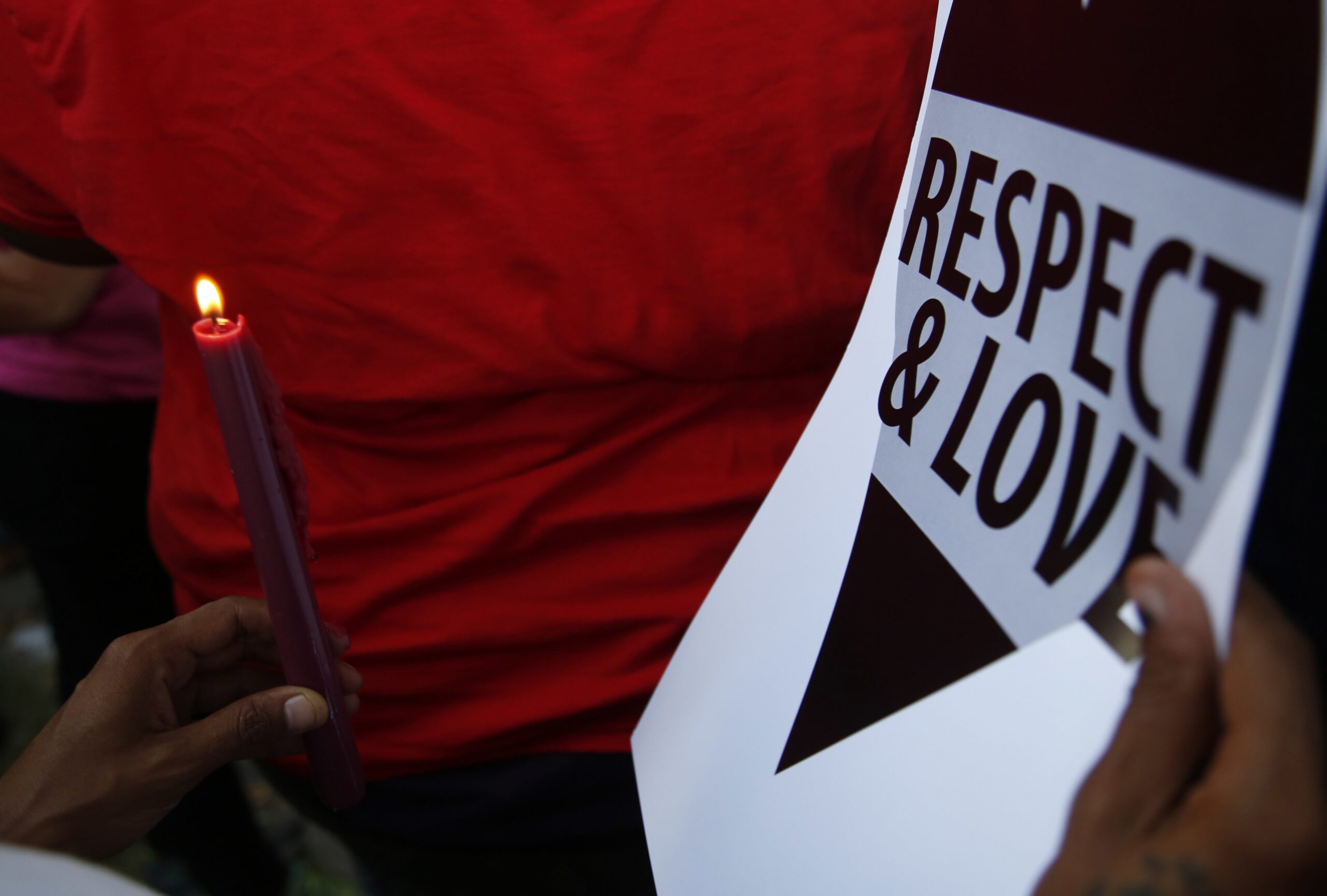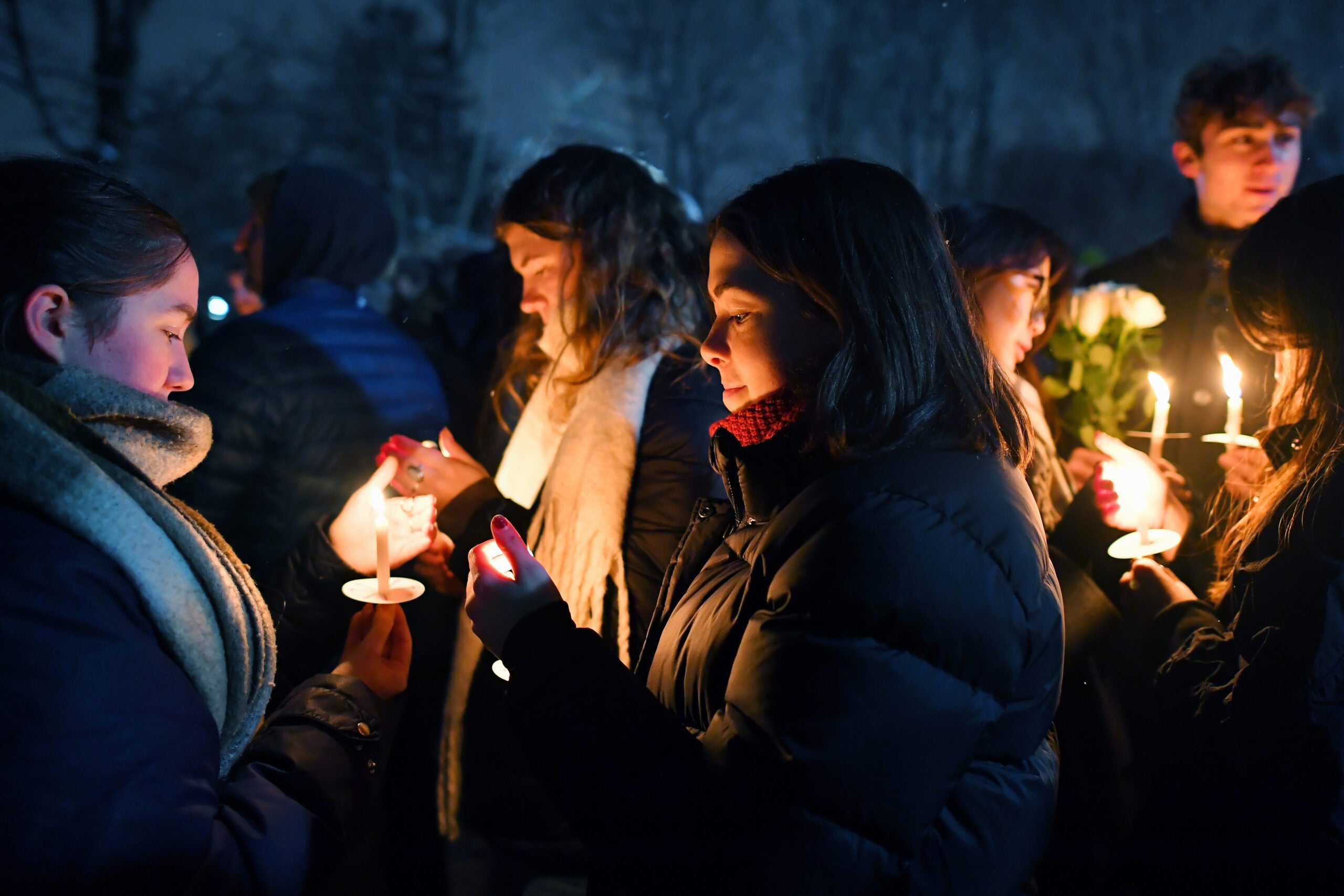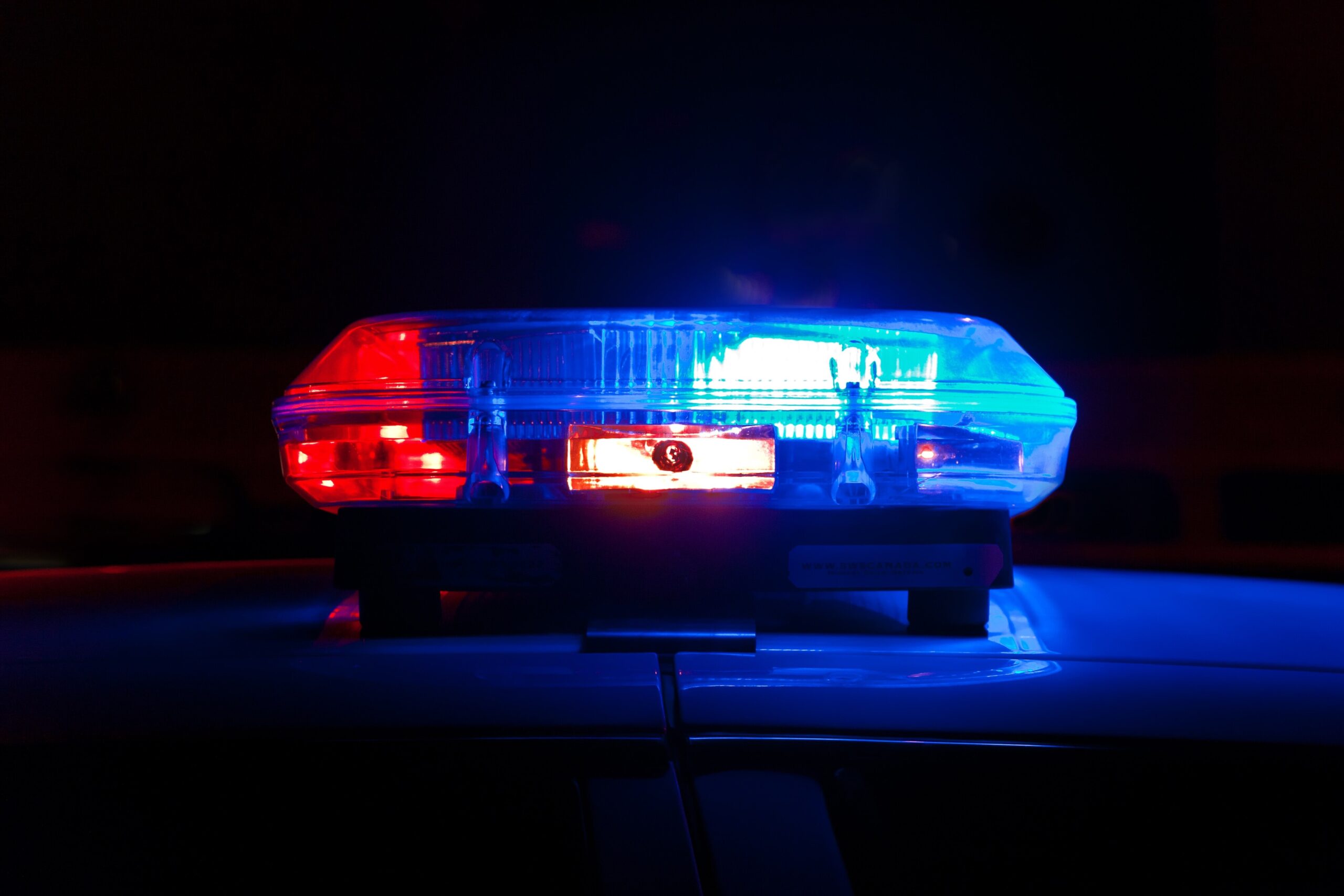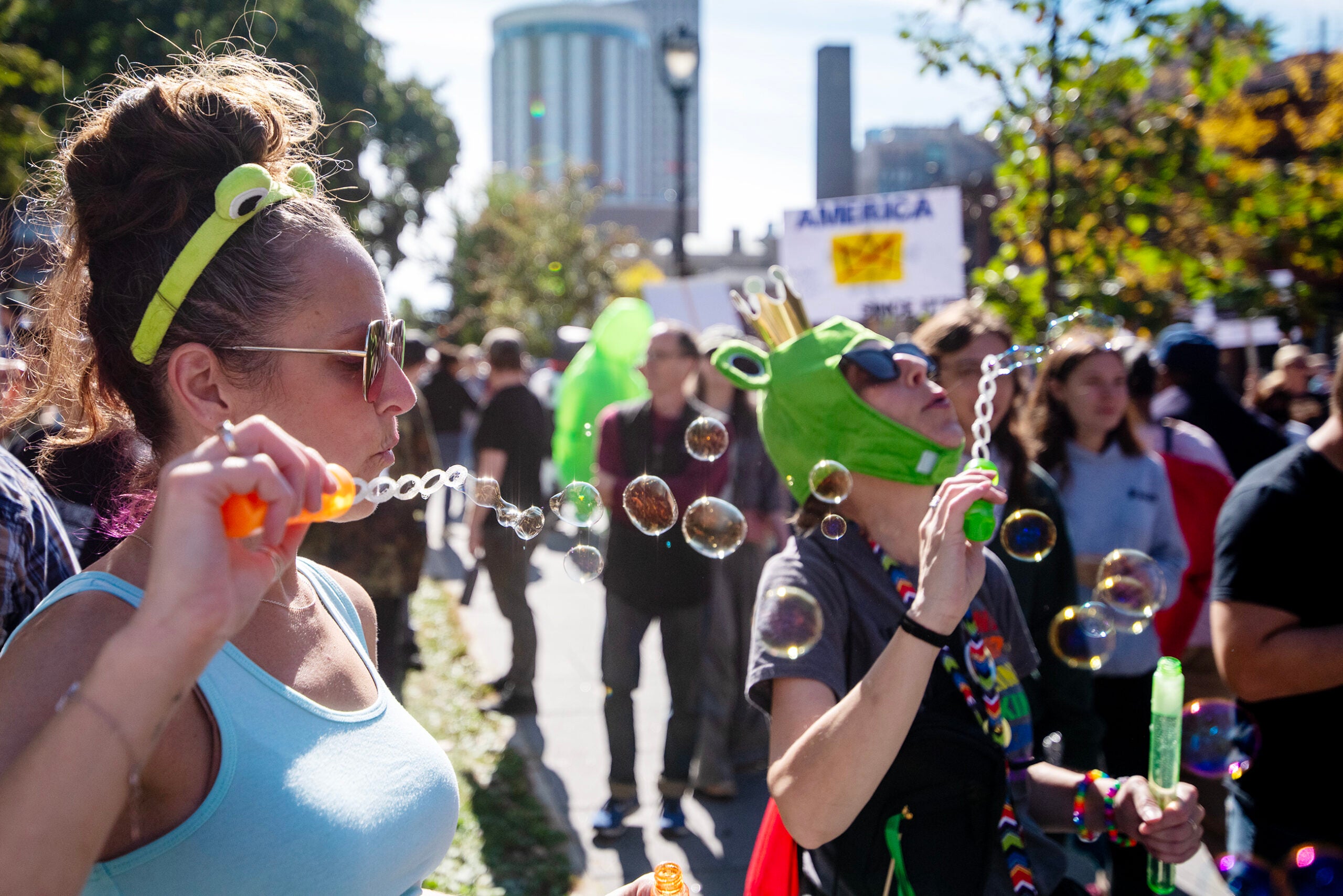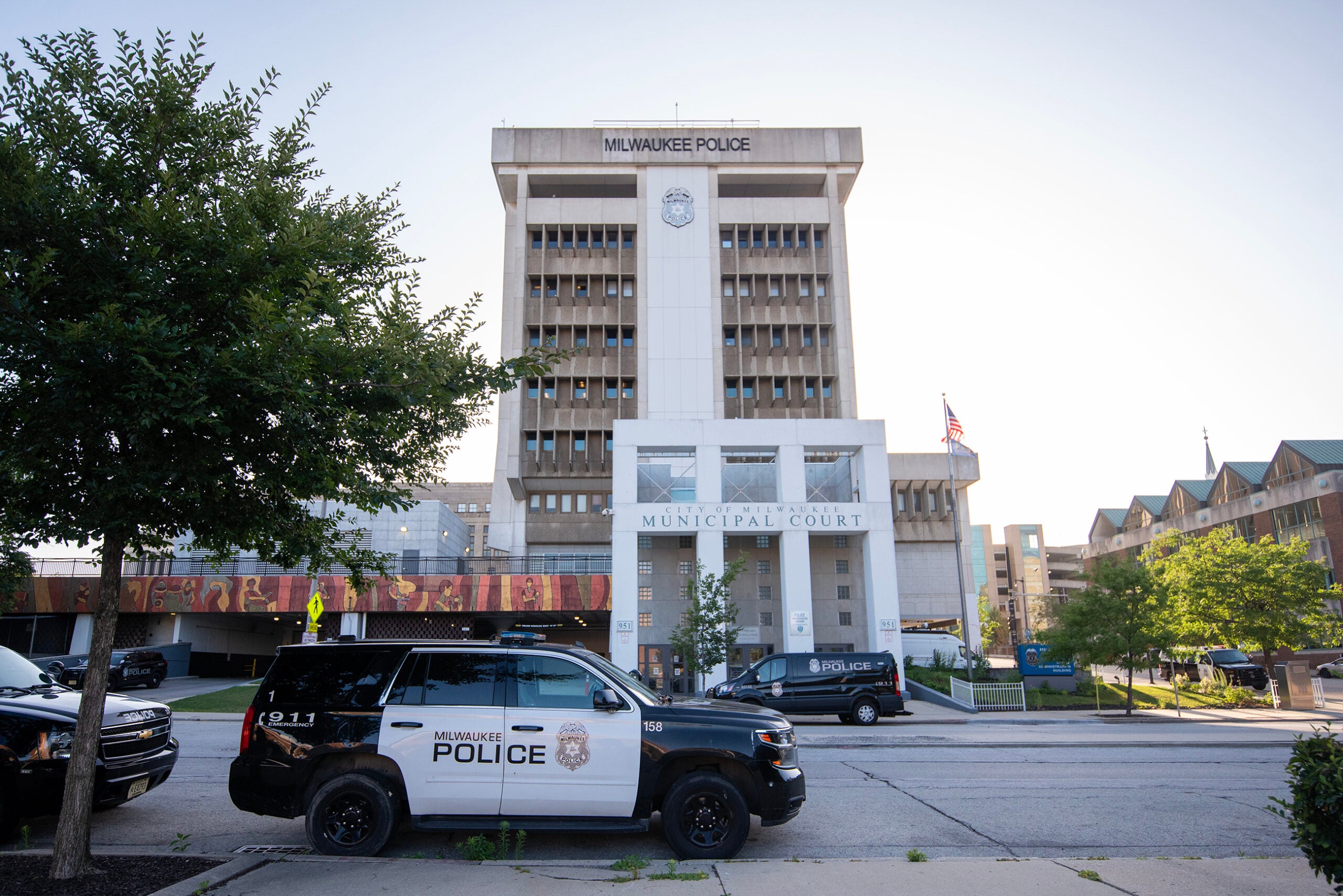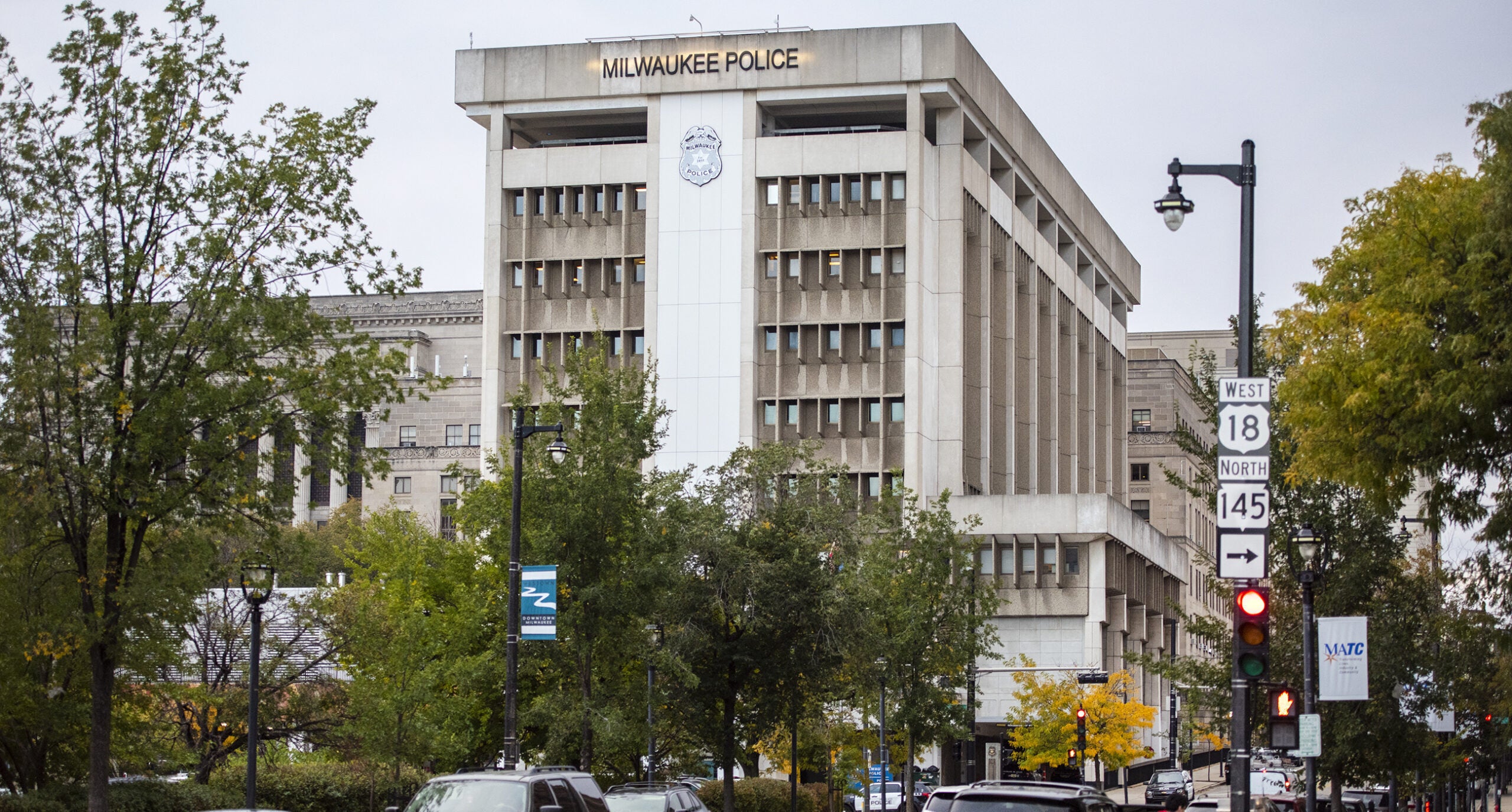Residents in Milwaukee’s Sherman Park neighborhood woke up Tuesday morning to a quieter neighborhood after Monday proved to be calmer than the previous nights marred by violence and destruction.
The neighborhood on the city’s north side erupted with protests and violence Saturday and Sunday nights after an African-American man, Sylville Smith, was fatally shot by a black Milwaukee police officer Saturday.
Milwaukee police have said the officer’s body camera footage shows Smith was carrying a gun when shot.
News with a little more humanity
WPR’s “Wisconsin Today” newsletter keeps you connected to the state you love without feeling overwhelmed. No paywall. No agenda. No corporate filter.
Milwaukee Police Chief Ed Flynn and Mayor Tom Barrett addressed the press at around 10:30 p.m. Monday at Sherman Park. The two spoke optimistically about the calming impact of strictly enforcing the city’s earlier 10 p.m. curfew for teens and the county’s closing of Sherman Park, where many gathered in previous evenings at 6 p.m.
Flynn said there were some confrontations and 10 people were arrested early Monday evening, but the neighborhood was relatively calm compared to the weekend. Only one shot was fired overnight, far less than the previous two nights.
Gov. Scott Walker had a series of listening sessions with religious leaders Tuesday afternoon at Citybrook Church in the Sherman Park neighborhood. Walker said religious leaders’ commitment to the community leaves him cautiously optimistic about peace being restored, but he noted respect between residents and law enforcement is vital.
“I think there needs to be respect across the spectrum,” Walker said. “Respect for legitimate concerns that I think men and women of color here and anywhere else and across the country have in terms of relations in the past and going in the future with law enforcement.”
Walker said he hopes the peace from Monday night can continue and that he believes it will even with Republican presidential nominee Donald Trump visiting town Tuesday.
Citybrook Pastor Peter Borg said Walker shared his thoughts, then asked for insight from the local leaders.
“He wanted to hear from us about what we thought the role of the church was in this and if there’s things we know that he should,” Borg said.
Borg said one of the main sentiments at the meeting was community churches’ ability to bring hope to the community.
Saturday night and into the early hours of Sunday, businesses and a police car burned, gunshots rang out and police in riot gear were pelted with rocks and other objects. The violence continued, to a lesser degree, on Sunday night when seven Milwaukee police officers and four Milwaukee County Sheriff’s Office deputies were injured and a Milwaukee man was shot in the neck by an unknown person.
Buck Phillips was at the park Monday evening and said law enforcement might have limited the demonstrations, but community concerns about police shootings remain.
“It’s still in their hearts, still in their minds,” Phillips said “This is fresh, it won’t leave. Someone has just lost their son.”
At a Monday morning press conference, Flynn said the weekend violence was unanticipated. The chief’s statement raised questions about whether authorities could have taken steps to curb the violence—perhaps by sharing details of the shooting earlier, including the officer’s race or footage from his body camera.
Flynn and Barrett also said they want the public to see the video reportedly showing the shooting. But the Wisconsin Department of Justice has the video and is reviewing the shooting, so releasing it might take time, Flynn said.
Randolph McLaughlin, a Pace University law professor and civil rights attorney, questioned how Milwaukee leaders could have expected the streets to stay quiet Saturday night given the nationwide conversation about law enforcement and race.
“For a mayor to say everything’s fine (and) we just killed somebody, that’s turning a blind eye to his town,” McLaughlin said.
Barrett should have reached out to residents and community leaders and asked, “What do we need to do to make sure your community is safe?” the attorney said. “He needs to stay on the job.”
The reaction Milwaukee—and the world—has been watching unfold could have happened even if police released the officer’s race sooner, said David Klinger, a University of Missouri-St. Louis sociology professor studying police use of deadly force,
Klinger pointed out that the city saw protests Sunday night, though less intense than Saturday, after the officer’s race was publicized. The police department might also have hesitated to give the officer’s race sooner for fear it would identify him, Klinger said.
Remy Cross, a criminologist at Webster University in St. Louis, said the officer’s race likely doesn’t matter to many people in the community.
“They see the institution as racist, not the individual,” Cross said. “Once you put on the uniform, you’re blue, and blue sees black as bad.”
It was “an error in narrative to assume” that because police shot someone, the shooting is controversial, “so let’s have a riot,” Flynn said.
Cecil Brewer, 67, who owns an apartment house directly across from the intersection where protesters burned a gas station Saturday night and hurled rocks at law enforcement Sunday night, said the rioting was all but inevitable.
“There’s so much anger in these kids,” Brewer said. The shooting “was like a spark in a powder keg. It doesn’t matter to them if what the authorities are saying is true.”
Editor’s Note: Kyla Calvert Mason, Chuck Quirmbach and Ross Terrell contributed to this report.
Editor’s Note: This story was last updated at 6:15 p.m. Tuesday.
Wisconsin Public Radio, © Copyright 2025, Board of Regents of the University of Wisconsin System and Wisconsin Educational Communications Board.

